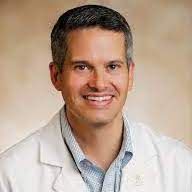Prevention of Pertussis, Tetanus, and Diphtheria with Vaccines ...



Novel, potentially first-in-class topical therapy berdazimer gel 10.3% provided lesion count reduction by 4 weeks in patients with molluscum contagiosum (MC), according to new phase 3 data.
The findings, presented in a late-breaking session at the American Academy of Dermatology (AAD) 2022 Annual Meeting this weekend, could support berdazimer gel as the first regulated therapy for patients with the mostly pediatric, mostly untreated virus-borne dermatologic disease.
A new chemical entity, berdazimer sodium is a component combined with nitric oxide (NO) release-promoting hydrogrel to addresses the various challenges presented by MC, a pox virus-borne dermatologic infection that causes lesions and scars predominately in children.
Approximately three-fourths of children infected with any of the 4 known types of MC go untreated, and resolution of the disease and its symptoms can take up to 5 years. Much of MC's physiological and molecular functionality is dependent on NO modulation, making berdazimer gel's mechanism of action a potential inhibitor of the disease.
The pivotal phase 3 B-SIMPLE4 trial, supported by berdazimer gel's company Novan, was a multicenter, randomized, double-blind, vehicle-controlled assessment of berdazimer gel's efficacy and safety versus vehicle in the treatment of MC over 12 weeks, with an additional 12-week safety follow-up period.
Led by John C. Browning, MD, MBA, of Texas Dermatology, investigators sought a primary endpoint of proportion of patients with complete clearance of all raised and palpable MC lesions at week 12. Secondary endpoints included proportion of patients with treatable lesion clearance by 8 weeks, and safety outcomes through 24 weeks.
Eligible patients were ≥6 months old with 3-70 lesions at baseline. Investigators randomized 891 patients 1:1 to either once-daily berdazimer gel 10.3% (n = 444) or vehicle (n = 447). Mean patient age among those treated with therapy was 6.6 years old; 51.4% were male, baseline mean lesion count was 23.1, and time since lesion awareness was 12.0 months. Patients in the vehicle arm had similar characteristics and demographics.
At 12 weeks, 394 (88.7%) and 400 (89.5%) patients from berdazimer gel and vehicle completed the trial, respectively. Another 377 (84.9%) and 377 (84.3%) patients, respectively, completed the 12-week follow-up safety period as well.
Browning and colleagues observed that approximately one-third (32.4%; P <.0001) of patients receiving berdazimer gel 10.3% achieved complete lesion clearance at week 12, versus 19.7% of patients on vehicle. At week 8, such rates were 19.6% and 11.6% (P = .0014), respectively. At week 4, they were 7.2% and 3.6% (P = .0121), respectively.
Clearance was most pronounced among treated patients aged 12 to <18 years old (n = 12 [50.0%]) and 6 to <12 years old (n = 65 [36.5%]).
Investigators observed 191 (43.0%) patients with ≥1 treatment-emergent adverse event (TEAE) associated with berdazimer gel; 18 (4.1%) discontinued the drug due to a TEAE and none reported a TEAE deemed serious in severity. The 2 adverse events leading to treatment discontinuation were application site pain and application site dermatitis.
The team concluded that berdazimer gel 10.3% provided early and continuous improvement of MC lesion counts in mostly pediatric patients, while showing a favorable safety and tolerability profile over 24 weeks.
As they noted, there are no drugs approved for treatment of the highly contagious and burdensome skin condition by the US Food and Drug Administration (FDA); investigators have vested hope these pivotal phase 3 data will support berdazimer gel's opportunity to become the first.
The study, "Berdazimer 10.3% Gel (SB206): A Novel, Topical Nitric Oxide Releasing Medication: Results from a Pivotal Phase 3 Study in Patients (Children and Adults) with Molluscum Contagiosum," was presented at AAD 2022.
Comments
Post a Comment